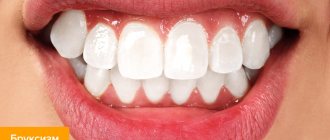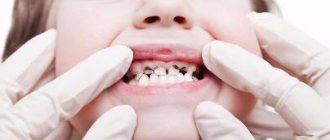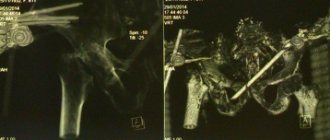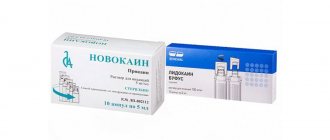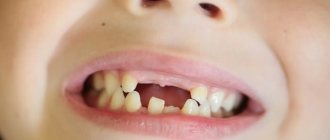Untimely treatment of caries in children leads to the development of pulpitis - inflammation of tooth tissue, including blood vessels and nerve bundles. The lower molars are most often affected, but the disease occurs even on the anterior elements. Therefore, pulpitis in children occurs even more often than in adults. This is due to a number of factors:
- thin weak enamel;
- large volume of pulp;
- wide root canals;
- less mineralization;
- weak immunity.
In addition to caries, pulpitis can be caused by trauma, including poor treatment.
Symptoms
Inflammation occurs in acute and chronic forms. Acute occurs less frequently, but has more severe symptoms and occurs in two stages:
- serous. The inflamed pulp is filled with serous fluid. There are complaints of severe pain in the tooth, intensifying at night and when chewing. The pain, as a rule, is intermittent, appears once and subsides. Most often, the process occurs in teeth with unformed or absorbable roots. After 5–6 hours, a transition to another stage occurs;
- purulent. Pus forms in the tissues, which begins to melt cells and tissues. The severity of the condition is influenced by immunity, dental condition, and bacterial activity. If the pus has an outlet in the form of a carious cavity or fistula, then the pain is mild. In the absence of outflow, the pain syndrome is bright and long-lasting, intensifying when chewing or eating cold or hot food. The general condition may worsen and fever may appear.
Chronic pulpitis occurs after acute pulpitis or on its own and is characterized by vague symptoms. Pain can only occur under unfavorable factors - cold or hot, too sweet food. The child begins to chew on one side, an unpleasant odor appears, and a bursting and pressing sensation occurs.
The danger of this form is that it is almost asymptomatic. Because of this, inflammation affects more and more tissues. Chronic pulpitis is of three types:
- fibrous. The lightest and most common form. Fibrous tissue grows, the pulp may bleed, and episodic pain appears from mechanical and thermal contact;
- hypertrophic. Develops with severe destruction of the tooth crown. Pathological growth of pulp tissue occurs, which fills the carious cavity;
- gangrenous. The most severe form, accompanied by pulp necrosis. The tooth becomes gray and bad breath appears due to tissue decomposition.
When should you visit a dentist?
The sensitivity of the neurovascular bundle of a tooth in a child is lower than in an adult, so the symptoms of its inflammation may be erased or absent altogether. It is important to contact a pediatric dentist when the first symptoms of caries appear - a dark spot on the tooth, or the child complains of pain. You should hurry up with your visit if:
- severe pain;
- increased pain when eating hot or cold food/drinks;
- bad breath;
- elevated body temperature;
- inflammation of the gums around the tooth;
- darkening of the enamel.
How to recognize the problem and is emergency treatment required?
Due to the reduced sensitivity of the pulp, pain during inflammation may be mild and not cause severe discomfort. In this case, the process of tissue destruction occurs rapidly. It is important to visit the dentist regularly and not ignore your child’s complaints of pain when chewing or when eating cold and hot foods.
Treatment for pulpitis should be immediate. The disease is dangerous due to complications - periodontitis or periostitis. It can also spread to a permanent tooth that has not yet erupted and destroy it.
Pulpitis in a child: symptoms of appearance
The clinical picture of this disease can be very diverse. The disease may not manifest itself or have quite pronounced symptoms.
The main signs of pulpitis:
- mild or intense pain, often radiating to the temporal or occipital regions;
- increased body temperature;
- swelling of the soft tissues of the face;
- lymphadenitis - inflammation of a regional lymph node - submandibular or cervical;
- periostitis – inflammation of the periosteum.
Treatment methods
The treatment of primary teeth in general does not differ from the treatment of permanent elements. If the child’s condition is serious, there is a threat of infection spreading throughout the body, amputation is performed. In most cases, the tooth is preserved to prevent malocclusion. Therapy is carried out in different ways:
- traditional. Involves treatment in three visits. During the first one, the nerve is opened, a devitalizing paste with arsenic is applied for 24-48 hours or without it for a period of up to 7 days. On the second visit, a pulp mummification mixture based on resorcinol-formalin is placed into the canals. At the last visit, a permanent filling is installed;
- modern. It takes place in 1 – 2 visits. If the child can sit quietly for a long time at the doctor and the roots of the tooth are formed, extraction is performed. The nerve is removed either on the first visit or after applying the paste. Next, the canals are carefully processed, infected tissue is removed, an anti-inflammatory paste (for example, zinc eugenol) is applied and closed with a filling. The composition will gradually dissolve along with the roots when changing teeth;
- partial vital amputation. The doctor removes the upper portion of the nerve and applies an antiseptic and anti-inflammatory medication that seals the remaining living pulp.
When treating teeth with immature roots, a different approach is chosen. This is due to several reasons:
- the apex of the roots has not yet closed and there is a risk of infection of the permanent tooth germ;
- the roots are short and the channels are wide;
- trauma to the upper zone of the root can lead to disturbances in its formation;
- It is impossible to remove the entire pulp and perform a complete canal treatment.
Most often, they choose amputation of the pulp by any method or biological treatment, when the tooth is cleaned of the affected tissue and a paste with calcium hydroxide is applied for several days. After this, a filling is installed.
Possible mistakes when treating pulpitis
Unfortunately, it is not at first glance that tooth pulpitis in a child is a simple ailment. Incorrect treatment can provoke nightmares such as periodontitis, periostitis and even acute polio.
The most common mistakes when treating pulpitis in children are:
- Incorrect assessment of the condition of the pulp and, consequently, partial removal of inflammation. In this case, the baby will very soon suffer from a new exacerbation.
- Loose bandage when removing pulp. In rare cases, doctors do not apply a temporary bandage with arsenic tightly enough, which can lead to burns and necrosis of the tissues of the cheek, tongue and mucous membranes.
- An overdose of arsenic can cause acute periodontitis, which requires longer treatment than pulpitis in a child.
- Trauma to the periodontium with a root needle. Incomplete cleaning of root canals during the treatment of acute or chronic pulpitis in children can also provoke periodontitis.
Is it possible not to treat pulpitis if the teeth are baby?
There is a common opinion that it is not necessary to treat baby teeth, because they will soon fall out. This is the biggest mistake parents make. Untreated pulpitis leads to irreparable consequences and even affects permanent teeth:
- purulent abscess, periodontitis, life-threatening condition;
- deep infection affecting the germ of a permanent tooth;
- malocclusion due to early tooth extraction due to untimely treatment;
- pain interferes with normal chewing of food, uneven load on the teeth leads to accelerated destruction of other elements.
Reviews
After reading reviews about the treatment of pulpitis at the Natadent clinic, you can be sure that our little patients and their parents are always satisfied with both the treatment process and the quality of the result.
Don't forget to leave your review, we will be very grateful!
LEAVE FEEDBACK
Prevention
The main method of preventing dental and oral diseases is regular visits to the dentist and treatment of caries in the early stages. It is important to teach a child hygiene and the rules of brushing teeth from the first years of life. Parents should control the diet, which should contain all the necessary substances, limit sweets and allow only water to drink at night.
Doctors at the VIMONTALE clinic treat pulpitis of primary teeth in children of any age. Specialists not only master modern painless techniques, but also know how to find contact with a child, know how to reduce anxiety and win the favor of the youngest patients.
Expert of the article you are reading:
Lozinskaya Alla Nikolaevna
Pediatric dentist, general dentist.
You may also be interested in:
Children's orthodontist Dental treatment for children Correction of bite in children Features of the treatment of childhood caries Removal of baby teeth Prevention of childhood caries Silvering of teeth in children
Show more
How is dental nerve removal performed in children?
In modern pediatric dentistry, the pulp removal procedure includes the following steps:
- Examination, clarification of the diagnosis, and radiography.
- Pain relief using local anesthetics.
- Isolation of the tooth. This is done to prevent saliva microbes from entering the tooth during treatment.
- Removal of all affected tissue using a drill.
- Removal of pulp residues in the tooth cavity.
- Applying a “therapeutic” filling to the bottom of the cavity.
- Tooth filling using modern composite materials.
- Tooth polishing
At the Natadent clinic, treatment of pulpitis in a standard clinical situation is carried out at a time and lasts about 40 minutes. In this case, the child does not experience any pain, the procedure gives him no more discomfort than conventional caries treatment.
Our patients
Patient recommendations
Akhmedkhanov Said Rashidovich
Dental surgeon, general dentist, implantologist, orthopedic dentist, dental therapist.
Make an appointment 8 (499) 520-98-70
Make an appointment
Recommendations from patient Alekseeva O.V.
Akhmedkhanov Said Rashidovich
Dental surgeon, general dentist, implantologist, orthopedic dentist, dental therapist.
Make an appointment 8 (499) 520-98-70
Make an appointment
Recommendations from patient Zolotareva S.V.
Akhmedkhanov Said Rashidovich
Dental surgeon, general dentist, implantologist, orthopedic dentist, dental therapist.
Make an appointment 8 (499) 520-98-70
Make an appointment
Recommendations from patient Vera
Akhmedkhanov Said Rashidovich
Dental surgeon, general dentist, implantologist, orthopedic dentist, dental therapist.
Make an appointment 8 (499) 520-98-70
Make an appointment
Recommendations from patient Mikhail Ivanovich
Akhmedkhanov Said Rashidovich
Dental surgeon, general dentist, implantologist, orthopedic dentist, dental therapist.
Make an appointment 8 (499) 520-98-70
Make an appointment
Collapse
What is pulpitis?
This is the name for inflammation of the dental pulp, which is connective tissue located deep inside the teeth with nerves, blood and lymphatic vessels. Popularly, the pulp is often simply called the dental nerve. The disease mainly affects primary molars, with the lower teeth becoming inflamed more often, although pulpitis of the anterior primary teeth also occurs. It is important to note that in childhood, due to the low strength of dentin and thin enamel, pulpitis develops faster than in adults.
Preventive measures
The basis for preventing childhood pulpitis is timely and complete treatment of caries (including baby teeth). In addition, it is important:
- rinse the child’s mouth after every meal, especially sweets;
- brush your teeth twice a day using a special children's toothpaste without abrasive particles and whitening components;
- Once a month, independently examine the child’s mouth; if symptoms of pathologies are detected, consult a doctor;
Bring your child for preventive dental examinations at least 2 times a year.
Gum inflammation
The most common inflammatory gum diseases in children are stomatitis and gingivitis. Stomatitis, or, as it is usually called, thrush, is an infectious inflammatory process provoked by fungi of the genus Candida. Treatment is antifungal and anti-inflammatory therapy, always carried out under the supervision and recommendations of a dentist. Self-medication can be dangerous, as some children may have allergic reactions to certain medications or antiseptics.
Gingivitis most often occurs due to plaque on baby teeth and insufficient general hygiene, but the reasons for their development can also be trauma to the gums during teething or other injuries, untreated caries. With this problem, you also need to contact a doctor, who will select the optimal treatment regimen and prevent gingivitis from developing into childhood periodontitis.
Reviews from parents and impressions of children
Novel
I didn’t even know that children can have pulpitis. But one day Varya got up in the morning with a swollen cheek. The tooth didn’t even hurt, but the doctor diagnosed pulpitis. We treated him in several stages. They put on a paste that does not prevent the roots from resolving. Now we take even more careful care of our teeth.
I put Aza&Buka:
5
Varya
Svetlana
At night, Ignat woke up in tears of pain. The tooth hurt very badly. Early in the morning we made an appointment for an emergency appointment at Azabuka and at half past nine we were already at the doctor’s office. It turned out that there was pulpitis of a baby tooth. He was treated with nitrous oxide. Ignatik watched cartoons, and the doctor saved our tooth. Everything ended well, thanks to the doctors!
I put Aza&Buka:
5
Ignat
Egor Alekseevich
Azabuka's doctors diagnosed Nikita with pulpitis during a routine preventive appointment. How is that possible?! And the tooth didn’t even hurt. They treated me in one visit using some cool technology. Now everything is all right.
I put Aza&Buka:
5
Nikita
